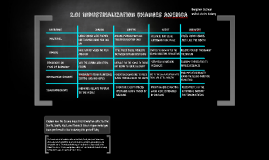

This was a big contributor to the drop in manufacturing jobs, as fewer cars and other durables purchases directly impacted manufacturing output.The War of 1812 occurred between the United States and Great Britain between 18. Notice the steep dive these purchases took during the recession. Pay particular attention to the red bar, as this shows consumers' durable purchases. The above two charts show PCEs percentage contribution of overall GDP growth in 1954, along with the contribution of various PCE sub-categories. This was caused by a slowdown in war purchases along with a drop in the demand for consumer durables.

In short, this was a manufacturing recession.Īnother way of looking at the recession is from the industrial production perspective, where we see a large drop in overall IP. In contrast, we see the service sector actually had a near net o% gain for 1953, but an addition of 400,000 by the end of 1954. As such, this sector took the brunt of the lay-offs in the recession, accounting for about 1.5 million of the lay-offs. So, we had a massive manufacturing plant (which was also geared up to supply the Korean War effort). In addition, we were the world's producer of goods because everyone else was bombed into nothingness. Remember that the US labor force was far more blue color during the 1950s, with about 40% of the labor force being involved in manufacturing or construction jobs. Also note that the total number of establishment jobs was far lower during the early 1950s economy - we were a much smaller labor force. We see a contraction of about nearly 1.6 million jobs in the period of about year. The above chart of total establishment jobs looks at the picture from another angle - namely, the total amount of jobs in the economy. AS a result, the economy was at an incredibly hot level which was bound to cool at some time.
#6.04 the korean war chart full#
However, also remember that the economy was at full employment when the recession started, largely because of two issues: the Korean War and the US supplying consumer products to satiate pent-up consumer demand. We see a big jump in the unemployment rate starting in late 1953 and lasting for most of 1954. The above chart of the unemployment rate is the real story of the recession. However, we see the Fed lowered rates near the end of the recession by 50 BP as a way to stimulate the recovery. Interest rates were already very low in the early 1950s (far lower than I would have imagined). Also note the quick response by the economy, which printed over 7% growth at the end of 1954. However, the 4Q of 1953 showed a deep contraction of over 5%. Two of these contractions were fairly shallow, coming in at -2.5% or less. On a continuously compounded annual rate of change chart, we see that GDP contracted for three quarters - 3Q53-1Q54. Here, I simply want to look at two years worth of macro level data to show what happened statistically. Very briefly, overproduction led to excess supply, which had to be culled by lowering supply, leading to lay-offs. Last week, I looked at the story line of the recession of July 1954-May 1954 as told by the 1954 Economic Report to the President. This post is part of the Bonddad Economic History Project


 0 kommentar(er)
0 kommentar(er)
